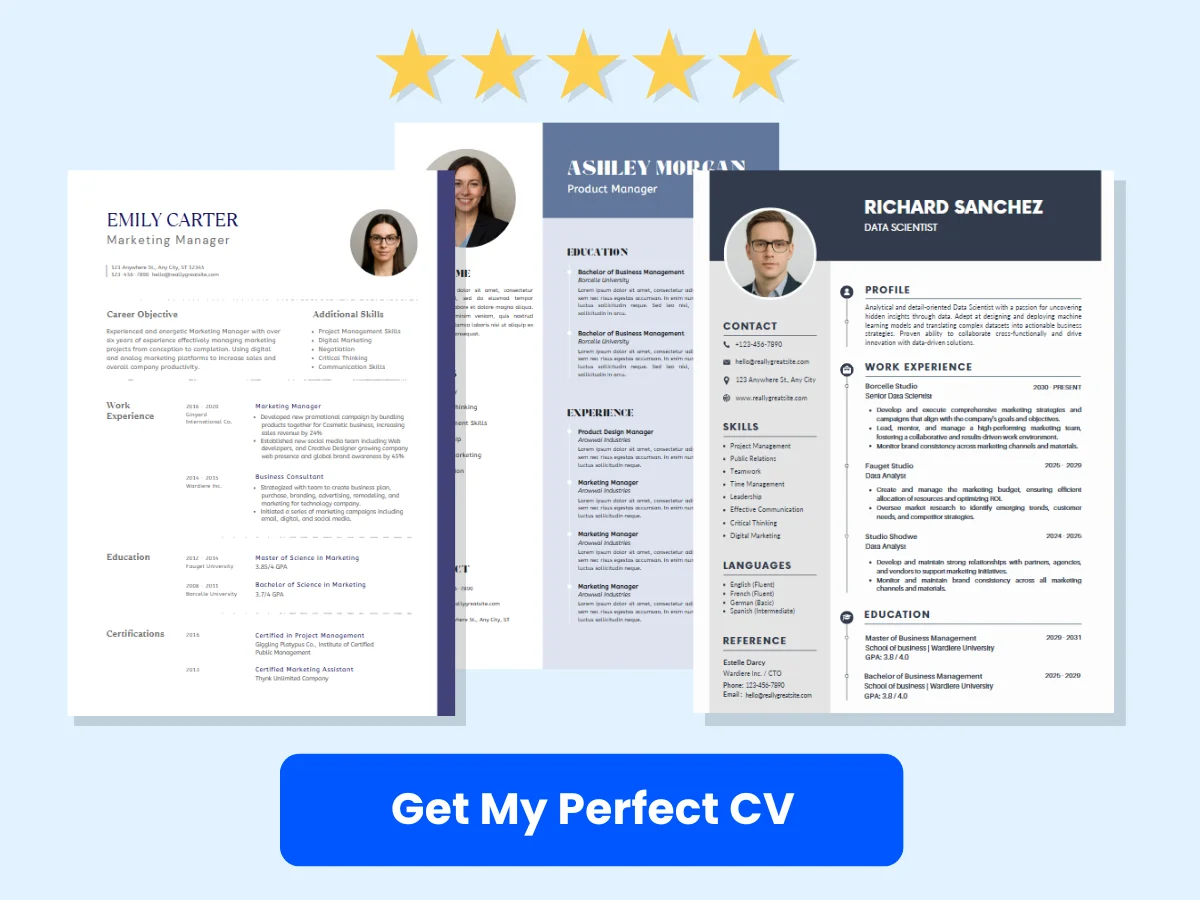In the complex world of employment and financial agreements, the term “Full and Final Settlement” often emerges as a critical concept that both employees and employers must navigate. This process signifies the conclusion of all claims and disputes between parties, ensuring that all dues are settled and future liabilities are waived. Understanding the nuances of a Full and Final Settlement is essential, as it can significantly impact your financial security and legal standing.
Whether you are an employee transitioning to a new opportunity or an employer managing workforce changes, grasping the implications of a Full and Final Settlement is vital. It not only protects your rights but also clarifies your obligations, paving the way for a smoother transition. In this article, we will delve into the intricacies of Full and Final Settlements, exploring their significance, the common pitfalls to avoid, and the best practices to ensure a fair and transparent process.
By the end of this article, you will have a comprehensive understanding of what a Full and Final Settlement entails, the key factors to consider, and actionable insights to help you navigate this essential aspect of employment and financial agreements with confidence.
Exploring Full and Final Settlement
Definition and Concept
A full and final settlement is a legal agreement that resolves all outstanding claims between parties, typically in the context of employment, contracts, or financial disputes. This settlement signifies that all obligations, liabilities, and claims are considered resolved, and no further claims can be made regarding the matter at hand. It is a crucial concept in various fields, including labor law, personal injury claims, and business contracts.
The essence of a full and final settlement lies in its ability to provide closure. Once both parties agree to the terms and sign the settlement document, they relinquish any future claims related to the issue. This can be particularly beneficial in avoiding prolonged disputes, saving time and resources for all involved. The settlement often includes a monetary payment, but it can also involve other forms of compensation, such as the return of property or the provision of services.


In legal terms, a full and final settlement is often accompanied by a release clause, which explicitly states that the parties agree to waive any future claims against each other regarding the settled matter. This clause is essential as it protects both parties from future litigation over the same issue, ensuring that the settlement is indeed ‘full and final.’
Common Scenarios Requiring Full and Final Settlement
Full and final settlements can arise in various contexts. Here are some common scenarios where such settlements are typically required:
1. Employment Termination
One of the most prevalent scenarios for full and final settlements occurs during employment termination. When an employee leaves a company—whether voluntarily or involuntarily—there may be outstanding issues such as unpaid wages, severance pay, or accrued vacation time. A full and final settlement in this context ensures that both the employer and employee agree on the terms of the departure.
For example, if an employee is laid off, the employer may offer a severance package that includes a lump sum payment in exchange for the employee signing a release of claims. This release would prevent the employee from suing the employer for wrongful termination or any other related claims in the future. The settlement document would detail the amount to be paid, the timeline for payment, and any other conditions that must be met.
2. Personal Injury Claims
In personal injury cases, a full and final settlement is often reached between the injured party and the insurance company or the party at fault. After an accident, the injured party may incur medical expenses, lost wages, and pain and suffering. To avoid a lengthy court battle, the parties may negotiate a settlement amount that compensates the injured party for their losses.
For instance, if a person is injured in a car accident, they may negotiate with the at-fault driver’s insurance company for a settlement. Once an agreement is reached, the injured party will sign a release form, which states that they accept the settlement amount and waive any future claims related to the accident. This protects the insurance company from further liability and provides the injured party with immediate compensation.


3. Business Contracts
In the realm of business, full and final settlements can occur when parties wish to resolve disputes arising from contracts. This may involve issues such as breach of contract, non-performance, or disagreements over terms. A full and final settlement allows businesses to move forward without the burden of ongoing disputes.
For example, if a supplier fails to deliver goods as per the contract, the buyer may choose to negotiate a settlement rather than pursue legal action. The settlement could involve a monetary payment to the buyer or a commitment to fulfill the contract terms in the future. By signing a settlement agreement, both parties agree to the terms and release each other from any further claims related to the contract.
4. Divorce and Family Law
In family law, full and final settlements are common during divorce proceedings. Couples may negotiate settlements regarding the division of assets, alimony, child support, and custody arrangements. A full and final settlement in this context ensures that both parties agree to the terms of the divorce and relinquish any future claims against each other regarding the matters settled.
For instance, a couple may agree on the division of their marital home and other assets. Once they reach an agreement, they will draft a settlement document that outlines the terms. By signing this document, both parties agree to the settlement and waive any future claims related to the division of property or financial support.
5. Debt Settlement
Full and final settlements are also prevalent in debt resolution scenarios. When a debtor is unable to pay their debts in full, they may negotiate a settlement with their creditors. This settlement typically involves the creditor agreeing to accept a reduced amount as payment in full for the debt.


For example, if an individual owes $10,000 to a credit card company but can only afford to pay $6,000, they may negotiate a full and final settlement. If the creditor agrees, the debtor will pay the agreed amount, and the creditor will release the debtor from the remaining balance. This type of settlement can help individuals avoid bankruptcy and provide a fresh start financially.
Key Considerations in Full and Final Settlements
While full and final settlements can provide significant benefits, there are several key considerations that parties should keep in mind:
- Legal Advice: It is advisable for parties to seek legal counsel before entering into a full and final settlement. An attorney can help ensure that the terms are fair and that the party understands their rights and obligations.
- Documentation: Proper documentation is crucial. The settlement agreement should be clear, detailed, and signed by all parties involved. This helps prevent misunderstandings and provides a record of the agreement.
- Future Claims: Parties should be aware that by signing a full and final settlement, they are waiving their right to pursue any future claims related to the settled matter. It is essential to fully understand the implications of this waiver.
- Negotiation: Negotiating a settlement can be complex. Parties should be prepared to discuss their positions and may need to compromise to reach an agreement.
Full and final settlements play a vital role in resolving disputes across various contexts, from employment and personal injury to business contracts and family law. Understanding the definition, common scenarios, and key considerations can help individuals and businesses navigate the settlement process effectively.
Components of Full and Final Settlement
When an employee leaves an organization, whether due to resignation, termination, or retirement, the process of settling their dues is known as the Full and Final Settlement (F&FS). This process is crucial as it ensures that all financial obligations between the employer and employee are met. Understanding the various components that make up a Full and Final Settlement is essential for both employees and employers. Below, we delve into the key components of F&FS, providing clarity on each aspect.
Salary and Wages
The first and foremost component of a Full and Final Settlement is the payment of any outstanding salary and wages. This includes:
- Pending Salary: If an employee has worked for a part of the month before leaving, they are entitled to receive the salary for those days. For instance, if an employee resigns on the 15th of the month, they should receive half a month’s salary, calculated based on the number of days worked.
- Overtime Pay: If the employee has worked overtime hours that have not yet been compensated, these should also be included in the final settlement. Employers must ensure that the calculation of overtime is accurate and adheres to company policy and labor laws.
- Incentives and Commissions: Any pending incentives or commissions that the employee is entitled to based on their performance or sales should also be factored into the final settlement.
It is important for both parties to review the salary calculations carefully to avoid disputes. Employers should provide a detailed breakdown of the salary components to ensure transparency.


Leave Encashment
Leave encashment refers to the payment made to an employee for the unused leave days at the time of their departure. This is a significant component of the Full and Final Settlement, especially for employees who have accrued a substantial number of leave days. Here are some key points regarding leave encashment:
- Accrued Leave: Employees are typically entitled to encash their earned leave days as per the company policy. For example, if an employee has 20 days of earned leave and the company allows encashment, they will receive payment for those days based on their daily wage.
- Policy Variations: Different organizations have different policies regarding leave encashment. Some may allow encashment of all unused leaves, while others may have a cap on the number of days that can be encashed. It is crucial for employees to be aware of their company’s leave policy.
- Tax Implications: Leave encashment may have tax implications depending on the jurisdiction and the amount involved. Employees should consult with a tax advisor to understand how this component will affect their tax liabilities.
Gratuity and Provident Fund
Gratuity and Provident Fund (PF) are two important components of the Full and Final Settlement, especially for employees who have served a significant period in the organization.
- Gratuity: Gratuity is a statutory benefit provided to employees who have completed a minimum period of service, usually five years. The amount is calculated based on the last drawn salary and the number of years of service. For example, if an employee’s last drawn salary is $50,000 and they have served for 10 years, the gratuity amount would be calculated as follows:
- Gratuity = (Last drawn salary × 15/26) × Number of years of service
- Gratuity = ($50,000 × 15/26) × 10 = $28,846.15
- Provident Fund: The Employee Provident Fund (EPF) is a retirement savings scheme where both the employer and employee contribute a percentage of the employee’s salary. Upon leaving the organization, the employee can withdraw the accumulated amount. The process for withdrawal may vary, and it is advisable for employees to check the specific procedures with the EPF authority.
Bonus and Incentives
Bonuses and incentives are additional financial rewards that employees may receive based on their performance or company profits. These can also be a part of the Full and Final Settlement:
- Performance Bonuses: If an employee is entitled to a performance bonus for the year, it should be included in the final settlement, especially if the bonus has been declared but not yet paid.
- Annual Bonuses: Many companies provide annual bonuses, often linked to the financial performance of the organization. If an employee leaves before the bonus is disbursed, they may still be entitled to a pro-rata share based on their tenure during the bonus period.
- Incentives for Achievements: Any incentives tied to specific achievements or targets should also be calculated and included in the final settlement. This ensures that employees are compensated fairly for their contributions.
Deductions and Recoveries
While the Full and Final Settlement typically involves payments to the employee, it is also essential to consider any deductions or recoveries that may apply:
- Outstanding Loans: If the employee has taken any loans from the employer, such as a salary advance or a personal loan, the outstanding amount may be deducted from the final settlement.
- Unreturned Company Property: If the employee has not returned company property, such as laptops, mobile phones, or other equipment, the cost of these items may be deducted from the final payment.
- Tax Deductions: Employers are required to deduct applicable taxes from the final settlement amount. Employees should ensure that the tax deductions are in line with their tax bracket and any exemptions they may be entitled to.
It is crucial for both employers and employees to maintain clear communication during the Full and Final Settlement process. A well-documented settlement statement that outlines all components, including payments and deductions, can help prevent misunderstandings and disputes. Employees should review the statement carefully and seek clarification on any discrepancies before signing off on the settlement.
Understanding the components of Full and Final Settlement is vital for both employees and employers. By being aware of what to expect and ensuring that all aspects are addressed, both parties can navigate the settlement process smoothly and amicably.


The Full and Final Settlement Process
Initiation of the Process
The full and final settlement process typically begins when an employee resigns, is terminated, or retires from their position. This process is crucial as it ensures that all dues are cleared, and both the employer and employee can part ways amicably. The initiation can be triggered by various circumstances, including voluntary resignation, redundancy, or disciplinary actions. Regardless of the reason, it is essential for both parties to understand their rights and obligations during this phase.
Upon initiation, the employee should formally communicate their intention to leave the organization, often through a resignation letter. This letter should include the last working day and any other pertinent details. The employer, in turn, should acknowledge this communication and begin the process of calculating the final settlement amount.
Documentation and Paperwork
Documentation is a critical aspect of the full and final settlement process. Both the employer and employee must ensure that all necessary paperwork is completed accurately to avoid any disputes later on. The following documents are typically required:
- Resignation Letter: A formal letter from the employee stating their intention to resign.
- Acceptance of Resignation: A letter from the employer acknowledging the resignation.
- Final Settlement Statement: A detailed statement outlining the amounts due to the employee, including salary, bonuses, and any other entitlements.
- Clearance Certificates: Documents from various departments (like HR, finance, and IT) confirming that the employee has returned all company property and settled any outstanding dues.
- Tax Documents: Any necessary tax forms that need to be filled out to ensure compliance with local tax laws.
It is advisable for both parties to keep copies of all documents for their records. This not only helps in maintaining transparency but also serves as evidence in case of any future disputes.


Calculation Methods
Calculating the final settlement amount can be complex, as it involves various components. The following are the primary elements that are typically included in the calculation:
- Outstanding Salary: This includes any unpaid salary for the days worked in the final month of employment.
- Leave Encashment: If the employee has any unused leave days, these may be encashed as part of the final settlement. The calculation is usually based on the employee’s daily wage multiplied by the number of unused leave days.
- Bonus and Incentives: Any pending bonuses or performance incentives that the employee is entitled to should also be included in the final settlement.
- Provident Fund and Gratuity: Depending on the length of service and the company policy, the employee may be eligible for provident fund contributions and gratuity payments.
- Deductions: Any outstanding loans, advances, or other deductions should be subtracted from the total amount due.
For example, if an employee’s monthly salary is $3,000, and they have 10 unused leave days, the calculation for leave encashment would be:
Leave Encashment = (Monthly Salary / Total Working Days in Month) * Unused Leave Days Leave Encashment = ($3,000 / 30) * 10 = $1,000
Thus, if the employee has an outstanding salary of $1,500, a bonus of $500, and is entitled to $1,000 for leave encashment, the total amount before deductions would be:
Total Amount = Outstanding Salary + Bonus + Leave Encashment Total Amount = $1,500 + $500 + $1,000 = $3,000
After calculating the total amount, any deductions (e.g., outstanding loans) should be subtracted to arrive at the final settlement figure.
Approval and Authorization
Once the calculation is complete, the next step is obtaining the necessary approvals and authorizations. This process may vary depending on the organization’s policies and the level of management involved. Typically, the following steps are taken:


- Review by HR: The HR department usually reviews the final settlement calculations to ensure accuracy and compliance with company policies.
- Managerial Approval: Depending on the organization, the immediate supervisor or manager may need to approve the final settlement amount.
- Finance Department Verification: The finance department may also be involved to verify the calculations and ensure that funds are available for disbursement.
It is essential for the employee to remain in communication with HR and management during this phase to address any questions or concerns that may arise. Delays in approvals can prolong the settlement process, so proactive communication is key.
Disbursement of Payment
After all approvals are secured, the final step is the disbursement of payment. This is the moment when the employee receives their final settlement amount. The payment can be made through various methods, including:
- Bank Transfer: The most common method, where the final settlement amount is directly transferred to the employee’s bank account.
- Cheque: In some cases, a physical cheque may be issued to the employee.
- Cash Payment: Although less common, some organizations may opt to provide cash payments, especially for smaller amounts.
It is crucial for the employee to verify that the amount received matches the final settlement statement. Any discrepancies should be addressed immediately with the HR or finance department to ensure that the issue is resolved promptly.
Additionally, employees should ensure that they receive a formal acknowledgment of the payment, which serves as proof of settlement. This acknowledgment can be important for future reference, especially if the employee needs to provide evidence of their employment history or financial transactions.
The full and final settlement process is a vital aspect of the employment lifecycle. Understanding each step—from initiation to payment disbursement—can help both employers and employees navigate this process smoothly, ensuring that all parties fulfill their obligations and maintain a positive relationship even after the employment has ended.
Legal and Compliance Aspects
Relevant Labor Laws and Acts
The concept of full and final settlement is deeply rooted in various labor laws and acts that govern employment relationships. In many jurisdictions, these laws are designed to protect both employers and employees during the termination of employment. Key legislation often includes the Fair Labor Standards Act (FLSA), the Employee Retirement Income Security Act (ERISA), and specific state labor laws that may vary significantly.
For instance, in the United States, the FLSA outlines minimum wage, overtime pay, and recordkeeping requirements, which can impact the final settlement calculations. Similarly, ERISA governs employee benefits, ensuring that employees receive their entitled benefits upon termination. In countries like India, the Payment of Wages Act, 1936, and the Industrial Disputes Act, 1947, play crucial roles in defining the rights and obligations of both parties during the settlement process.
Understanding these laws is essential for both employers and employees to ensure compliance and avoid potential legal disputes. Employers must be aware of the specific provisions that apply to their industry and location, while employees should familiarize themselves with their rights under these laws to ensure they receive fair treatment during the settlement process.
Employer Obligations
Employers have a range of obligations when it comes to full and final settlements. These obligations can vary based on local laws, the terms of employment contracts, and company policies. Generally, employers are required to provide a clear and detailed breakdown of the final settlement amount, which should include:
- Outstanding Salary: Any unpaid wages for the period worked up to the termination date.
- Accrued Leave: Compensation for any unused vacation or sick leave, as stipulated in the employment contract or company policy.
- Bonuses and Commissions: Any earned but unpaid bonuses or commissions that are due to the employee.
- Severance Pay: If applicable, severance pay should be calculated based on the terms of the employment contract or company policy.
- Retirement Benefits: Information regarding the status of retirement benefits and how they will be disbursed.
Additionally, employers must ensure that all deductions are lawful and properly documented. This includes deductions for taxes, social security, and any other legally mandated withholdings. Failure to comply with these obligations can lead to legal repercussions, including claims for unpaid wages or benefits.
Employee Rights
Employees have specific rights when it comes to full and final settlements. Understanding these rights is crucial for ensuring that they receive what they are entitled to upon termination. Key rights include:
- Right to Receive Final Payment: Employees are entitled to receive their final payment within a reasonable timeframe after their employment ends. The exact timeframe can vary by jurisdiction, but it is typically within a few weeks.
- Right to Clarity: Employees have the right to a clear and detailed explanation of the final settlement amount, including how it was calculated and what it includes.
- Right to Challenge Deductions: Employees can dispute any deductions they believe are unlawful or incorrect. They should be provided with documentation supporting any deductions made from their final pay.
- Right to Benefits: Employees should be informed about their rights regarding any benefits they may be entitled to, such as health insurance continuation under COBRA in the U.S. or pension benefits.
Employees should also be aware of their rights to seek legal recourse if they believe their employer has not complied with the relevant labor laws or has failed to provide a fair settlement. This may include filing a complaint with a labor board or pursuing legal action in court.
Dispute Resolution Mechanisms
Disputes regarding full and final settlements can arise for various reasons, including disagreements over the amount owed, the timing of payment, or the legality of deductions. To address these disputes, several mechanisms are typically available:
- Internal Grievance Procedures: Many companies have internal processes for employees to raise concerns or disputes regarding their final settlement. This may involve submitting a formal complaint to HR or a designated grievance officer.
- Mediation: Mediation is a voluntary process where a neutral third party helps facilitate a resolution between the employer and employee. This can be a less adversarial approach compared to litigation.
- Arbitration: In some cases, employment contracts may include arbitration clauses, requiring disputes to be resolved through arbitration rather than in court. This process is typically binding and can limit the options for appeal.
- Legal Action: If other resolution methods fail, employees may choose to pursue legal action against their employer. This can involve filing a lawsuit for breach of contract or violation of labor laws.
It is advisable for both parties to document all communications and agreements related to the settlement process, as this can be crucial in resolving disputes effectively.
Penalties for Non-Compliance
Failure to comply with the legal requirements surrounding full and final settlements can result in significant penalties for employers. These penalties can vary based on the jurisdiction and the specific laws that have been violated. Common consequences include:
- Fines: Employers may face fines imposed by labor boards or regulatory agencies for failing to pay employees their rightful wages or benefits.
- Back Pay: Employers may be required to pay back wages to employees who were underpaid or not paid at all during the settlement process.
- Legal Fees: If an employee pursues legal action and prevails, the employer may be responsible for covering the employee’s legal fees in addition to any damages awarded.
- Reputational Damage: Non-compliance can lead to negative publicity and damage to the employer’s reputation, which can affect future hiring and business operations.
To mitigate these risks, employers should ensure they are fully aware of their obligations under relevant labor laws and maintain transparent communication with employees throughout the settlement process. Regular training and updates on labor law compliance can also help prevent unintentional violations.
Understanding the legal and compliance aspects of full and final settlements is crucial for both employers and employees. By being informed about relevant laws, obligations, rights, dispute resolution mechanisms, and potential penalties for non-compliance, both parties can navigate the settlement process more effectively and minimize the risk of disputes.
Challenges and Best Practices
Common Challenges Faced by Employers
Employers often encounter a variety of challenges when navigating the process of full and final settlements. Understanding these challenges is crucial for ensuring compliance and maintaining positive employee relations.
1. Legal Compliance
One of the primary challenges for employers is ensuring compliance with local labor laws and regulations. Different jurisdictions have varying requirements regarding severance pay, notice periods, and other entitlements. Failure to comply can lead to legal disputes, fines, and damage to the company’s reputation.
2. Documentation and Record-Keeping
Employers must maintain accurate and comprehensive records of employment, including contracts, performance reviews, and any disciplinary actions. Incomplete or poorly organized documentation can complicate the settlement process and lead to misunderstandings or disputes.
3. Emotional and Psychological Factors
Terminating an employee can be an emotionally charged process. Employers may struggle with the emotional fallout from layoffs or terminations, which can affect team morale and productivity. Additionally, the departing employee may feel resentment or anger, complicating the settlement discussions.
4. Negotiation Difficulties
Negotiating a full and final settlement can be challenging, especially if the employee feels they are entitled to more than what is being offered. Employers must balance the need to protect the company’s interests while also being fair and reasonable in their offers.
5. Timing Issues
Timing is critical in the settlement process. Delays in processing settlements can lead to frustration for both parties. Employers must ensure that settlements are processed promptly to avoid prolonged disputes and potential legal action.
Best Practices for Employers
To navigate the challenges associated with full and final settlements effectively, employers can adopt several best practices.
1. Clear Policies and Procedures
Establishing clear policies and procedures for full and final settlements can help streamline the process. Employers should document the steps involved, including how to calculate severance pay, the timeline for processing settlements, and the documentation required from both parties.
2. Training for Management
Providing training for managers and HR personnel on handling terminations and settlements can improve the process. Training should cover legal compliance, negotiation techniques, and how to handle emotional situations with empathy and professionalism.
3. Open Communication
Encouraging open communication between employers and employees can help mitigate misunderstandings. Employers should be transparent about the reasons for termination and the terms of the settlement. This openness can foster trust and reduce the likelihood of disputes.
4. Fair and Reasonable Offers
Employers should strive to make fair and reasonable settlement offers. This includes considering the employee’s length of service, the circumstances of their departure, and any legal entitlements. A fair offer can help prevent disputes and foster goodwill, even in difficult situations.
5. Timely Processing
Employers should prioritize timely processing of settlements. Delays can lead to frustration and may result in legal action. Setting clear timelines for each step of the process can help ensure that settlements are completed promptly.
Common Challenges Faced by Employees
Employees also face challenges during the full and final settlement process. Understanding these challenges can help them navigate the process more effectively.
1. Understanding Entitlements
Many employees are unaware of their rights and entitlements during a full and final settlement. This lack of knowledge can lead to employees accepting less than they are entitled to. It is essential for employees to educate themselves about local labor laws and their specific employment contracts.
2. Emotional Impact
The emotional impact of losing a job can be significant. Employees may experience feelings of anger, sadness, or anxiety, which can cloud their judgment during the settlement process. It is important for employees to take the time to process their emotions and seek support if needed.
3. Negotiation Skills
Not all employees are skilled negotiators. Many may feel uncomfortable negotiating their settlement terms, leading them to accept initial offers without fully understanding their value. Employees should consider seeking advice from professionals or trusted colleagues to help them navigate negotiations.
4. Fear of Retaliation
Employees may fear retaliation from their employer if they push back on settlement offers. This fear can prevent them from advocating for their rights. It is crucial for employees to know that they are protected by labor laws and that they have the right to negotiate their settlements without fear of repercussions.
5. Time Constraints
Employees may face time constraints when dealing with settlements, especially if they are under financial pressure after losing their job. This urgency can lead to hasty decisions that may not be in their best interest. Employees should take the time to review their options carefully before accepting any settlement offers.
Best Practices for Employees
To navigate the full and final settlement process successfully, employees can adopt several best practices.
1. Educate Yourself
Employees should take the initiative to educate themselves about their rights and entitlements. This includes understanding local labor laws, reviewing their employment contracts, and knowing what constitutes a fair settlement offer.
2. Seek Professional Advice
Consulting with a legal professional or an employment advisor can provide valuable insights into the settlement process. These experts can help employees understand their rights, evaluate settlement offers, and negotiate more effectively.
3. Document Everything
Keeping detailed records of all communications and documents related to the settlement process is essential. This documentation can serve as evidence in case of disputes and can help employees stay organized throughout the process.
4. Stay Calm and Professional
Maintaining a calm and professional demeanor during negotiations can help employees achieve better outcomes. Emotional reactions can cloud judgment and lead to poor decision-making. Employees should focus on the facts and remain composed during discussions.
5. Take Your Time
Employees should not rush into accepting settlement offers. Taking the time to review the offer, seek advice, and consider all options can lead to a more favorable outcome. It is essential to weigh the pros and cons before making a decision.
Role of HR and Payroll Departments
The HR and payroll departments play a critical role in the full and final settlement process. Their involvement can help ensure that settlements are handled efficiently and in compliance with legal requirements.
1. Policy Development
HR is responsible for developing and implementing policies related to full and final settlements. This includes creating guidelines for calculating severance pay, outlining the documentation required, and establishing timelines for processing settlements.
2. Employee Support
HR departments should provide support to employees throughout the settlement process. This includes answering questions, providing information about entitlements, and offering resources for legal advice if needed. A supportive HR team can help ease the emotional burden on employees during this challenging time.
3. Coordination with Payroll
The payroll department must work closely with HR to ensure that all financial aspects of the settlement are handled accurately and promptly. This includes calculating final paychecks, severance payments, and any other financial entitlements. Accurate payroll processing is essential to avoid disputes and maintain trust with departing employees.
4. Compliance Monitoring
HR and payroll departments must stay informed about changes in labor laws and regulations to ensure compliance during the settlement process. Regular training and updates can help these departments remain knowledgeable about their responsibilities and avoid potential legal issues.
5. Conflict Resolution
In cases where disputes arise during the settlement process, HR can play a vital role in conflict resolution. By facilitating open communication and negotiation between the employer and employee, HR can help find mutually agreeable solutions and prevent escalation into legal disputes.
Technology and Tools
Software Solutions for Full and Final Settlement
In today’s fast-paced business environment, managing employee exits efficiently is crucial for maintaining organizational integrity and ensuring compliance with labor laws. Software solutions designed for full and final settlements streamline the process, making it easier for HR departments to handle the complexities involved. These tools can automate calculations, generate necessary documentation, and provide a clear audit trail.
Some popular software solutions include:
- HR Management Systems (HRMS): Comprehensive platforms like BambooHR, Gusto, and Workday offer modules specifically for managing employee exits. They can automate the calculation of final pay, including accrued leave, bonuses, and deductions.
- Payroll Software: Tools such as QuickBooks Payroll and ADP can integrate with HR systems to ensure that final settlements are processed accurately and on time. They help in managing tax implications and ensuring compliance with local regulations.
- Document Management Systems: Solutions like DocuSign and Adobe Sign facilitate the electronic signing of settlement agreements, ensuring that all parties have access to the necessary documentation without the hassle of physical paperwork.
By leveraging these software solutions, organizations can reduce the time spent on administrative tasks, minimize errors, and enhance the overall employee experience during the exit process.
Automation and Efficiency
Automation plays a pivotal role in enhancing the efficiency of full and final settlement processes. By automating repetitive tasks, organizations can free up HR personnel to focus on more strategic initiatives. Here are some key areas where automation can make a significant impact:
- Calculation of Final Pay: Automated systems can quickly calculate the final pay due to an employee, including any outstanding bonuses, commissions, or accrued vacation days. This reduces the risk of human error and ensures that employees receive accurate payments.
- Document Generation: Automation tools can generate necessary documents, such as settlement agreements and tax forms, based on predefined templates. This not only saves time but also ensures consistency and compliance with legal requirements.
- Notifications and Reminders: Automated notifications can remind HR personnel of critical deadlines, such as the last working day of an employee or the submission of final settlement documents. This helps in keeping the process on track and ensures that no steps are overlooked.
For example, a company using an automated HRMS can set up workflows that trigger notifications when an employee submits their resignation. The system can automatically calculate the final settlement amount and generate the necessary documents, allowing HR to focus on the employee’s transition rather than getting bogged down in administrative tasks.
Data Security and Privacy
When dealing with full and final settlements, data security and privacy are paramount. Organizations must ensure that sensitive employee information is protected throughout the settlement process. Here are some best practices to consider:
- Encryption: All sensitive data, including personal identification information and financial details, should be encrypted both in transit and at rest. This ensures that even if data is intercepted, it remains unreadable to unauthorized users.
- Access Controls: Implement strict access controls to limit who can view and manage sensitive employee data. Role-based access ensures that only authorized personnel can access specific information, reducing the risk of data breaches.
- Regular Audits: Conduct regular audits of data access and usage to identify any potential vulnerabilities. This proactive approach helps in mitigating risks before they can be exploited.
- Compliance with Regulations: Ensure that your organization complies with relevant data protection regulations, such as GDPR or HIPAA, depending on your location and industry. This includes obtaining necessary consents from employees regarding the handling of their data.
By prioritizing data security and privacy, organizations can build trust with their employees and protect themselves from potential legal repercussions associated with data breaches.
Integration with HR and Payroll Systems
Integrating full and final settlement processes with existing HR and payroll systems is essential for ensuring a seamless experience for both HR personnel and departing employees. Here are some key benefits of integration:
- Streamlined Processes: Integration allows for the automatic transfer of data between systems, reducing the need for manual data entry. This not only saves time but also minimizes the risk of errors that can occur when transferring information between disparate systems.
- Real-Time Updates: When an employee’s status changes, such as when they submit their resignation, integrated systems can update all relevant records in real-time. This ensures that HR and payroll teams are always working with the most current information.
- Comprehensive Reporting: Integrated systems can provide comprehensive reporting capabilities, allowing HR to analyze trends related to employee exits, such as turnover rates and reasons for leaving. This data can inform future HR strategies and initiatives.
- Improved Employee Experience: A seamless integration between HR and payroll systems can enhance the employee experience during the exit process. Employees can receive timely updates regarding their final pay and any outstanding benefits, reducing anxiety and uncertainty.
For instance, a company that integrates its HRMS with its payroll system can ensure that once an employee’s resignation is processed, their final pay is automatically calculated and scheduled for disbursement on their last working day. This level of efficiency not only benefits the organization but also leaves a positive impression on departing employees.
Leveraging technology and tools for full and final settlements can significantly enhance the efficiency, security, and overall experience of the exit process. By investing in the right software solutions, automating key tasks, prioritizing data security, and ensuring seamless integration with existing systems, organizations can navigate the complexities of employee exits with confidence and ease.
FAQs and Common Misconceptions
Frequently Asked Questions
What is a Full and Final Settlement?
A Full and Final Settlement (FFS) is a legal agreement that resolves all claims and disputes between parties, typically in the context of employment or contractual relationships. It signifies that one party has received a complete and final payment, and in return, they relinquish any further claims against the other party. This type of settlement is often used in cases of termination, redundancy, or disputes over unpaid wages.
When is a Full and Final Settlement Used?
Full and Final Settlements are commonly utilized in various scenarios, including:
- Employment Termination: When an employee leaves a company, whether voluntarily or involuntarily, an FFS can be used to settle any outstanding payments, such as severance pay, unused vacation days, or bonuses.
- Contractual Disputes: In business agreements, if one party believes they have fulfilled their obligations, they may offer a full and final settlement to the other party to resolve any disputes without further litigation.
- Insurance Claims: After an accident or loss, an insurance company may offer a full and final settlement to the claimant to close the case and avoid future claims related to the incident.
What Should Be Included in a Full and Final Settlement Agreement?
A comprehensive Full and Final Settlement agreement should include the following elements:
- Identification of Parties: Clearly state the names and roles of the parties involved in the settlement.
- Details of the Settlement: Specify the amount being paid, the method of payment, and any conditions attached to the payment.
- Release of Claims: Include a clause where the receiving party agrees to release the other party from any future claims related to the matter being settled.
- Confidentiality Clause: If applicable, outline any confidentiality requirements regarding the terms of the settlement.
- Governing Law: Specify which jurisdiction’s laws will govern the agreement.
Is a Full and Final Settlement Legally Binding?
Yes, a Full and Final Settlement is legally binding once both parties have signed the agreement. It is essential that both parties fully understand the terms before signing, as doing so typically waives the right to pursue any further claims related to the matter. It is advisable to seek legal counsel before entering into such agreements to ensure that your rights are protected.
Can I Negotiate a Full and Final Settlement?
Absolutely! Negotiation is a common part of the settlement process. If you believe the initial offer is insufficient, you can present your case and negotiate for a better settlement. Factors that may influence the negotiation include the strength of your claims, the financial position of the other party, and the potential costs of litigation. It is often beneficial to have a legal representative during negotiations to advocate on your behalf.
Addressing Common Misconceptions
Misconception 1: Full and Final Settlements are Only for Employees
While Full and Final Settlements are frequently associated with employment situations, they are not limited to this context. Businesses, contractors, and individuals can all utilize FFS agreements to resolve disputes. For instance, a contractor may settle a payment dispute with a client through an FFS, ensuring that both parties agree to the terms and avoid future claims.
Misconception 2: Signing a Full and Final Settlement Means You Can Never Sue Again
While it is true that signing an FFS typically waives your right to pursue further claims related to the settled matter, there are exceptions. If the settlement was obtained through fraud, coercion, or if the terms were not fulfilled by the other party, you may still have grounds to pursue legal action. It is crucial to understand the specific terms of the settlement and consult with a legal professional if you have concerns.
Misconception 3: Full and Final Settlements are Always Fair
Not all Full and Final Settlements are equitable. The fairness of a settlement depends on various factors, including the strength of the claims, the negotiating power of each party, and the circumstances surrounding the dispute. It is essential to evaluate the terms of the settlement critically and seek legal advice if you feel the offer is unjust.
Misconception 4: You Don’t Need Legal Advice for a Full and Final Settlement
Many individuals believe they can navigate Full and Final Settlements without legal assistance. However, this can be a risky approach. Legal professionals can provide valuable insights into the implications of the settlement, help negotiate better terms, and ensure that your rights are protected. It is always advisable to consult with a lawyer before signing any settlement agreement.
Expert Opinions and Advice
Understanding the Importance of Documentation
Experts emphasize the importance of thorough documentation in the settlement process. Keeping detailed records of all communications, agreements, and payments can protect your interests and provide clarity in case of future disputes. Documentation serves as evidence of the terms agreed upon and can be crucial if either party fails to uphold their end of the agreement.
Seeking Professional Guidance
Legal experts recommend that individuals facing a Full and Final Settlement consider hiring an attorney who specializes in employment law or contract disputes. An experienced lawyer can help you understand your rights, evaluate the fairness of the settlement, and negotiate on your behalf. They can also assist in drafting the settlement agreement to ensure it is comprehensive and legally sound.
Timing is Key
Timing can significantly impact the outcome of a Full and Final Settlement. It is often beneficial to address disputes promptly, as delays can complicate negotiations and lead to increased costs. If you are considering a settlement, act quickly to gather evidence, document your claims, and engage in negotiations. The sooner you address the issue, the better your chances of reaching a favorable settlement.
Consider the Long-Term Implications
Before agreeing to a Full and Final Settlement, it is crucial to consider the long-term implications. While a settlement may provide immediate relief, it could also affect your future rights and opportunities. For example, accepting a settlement may impact your eligibility for unemployment benefits or future claims against the employer. Weigh the pros and cons carefully and seek advice to ensure you make an informed decision.
Key Takeaways
- Understanding Full and Final Settlement: It is crucial to grasp the definition and components of full and final settlement, which includes salary, leave encashment, gratuity, and other financial entitlements upon termination of employment.
- Process Awareness: Familiarize yourself with the full and final settlement process, including initiation, documentation, calculation, approval, and disbursement to ensure a smooth transition.
- Legal Compliance: Both employers and employees must be aware of relevant labor laws, employer obligations, and employee rights to avoid disputes and ensure compliance.
- Challenges and Best Practices: Recognize common challenges faced by both parties and implement best practices to mitigate issues, such as clear communication and thorough documentation.
- Leverage Technology: Utilize software solutions and automation tools to enhance the efficiency and accuracy of the full and final settlement process while ensuring data security.
- Address Misconceptions: Educate yourself on common misconceptions surrounding full and final settlements to make informed decisions and avoid pitfalls.
Conclusion
Understanding the intricacies of full and final settlement is essential for both employers and employees. By being informed about the process, legal requirements, and best practices, you can navigate this critical phase of employment with confidence. Implementing the insights from this article will not only facilitate smoother transitions but also foster a more transparent and compliant workplace environment.








